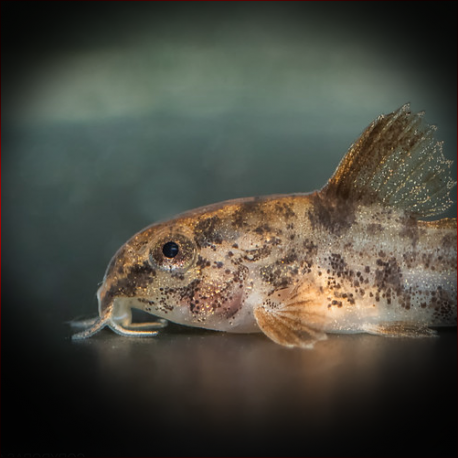More info
Datasheet
| Maximum Size | 4.5cm / 1.77inches |
| Temperature | 15°C / 59.00°F - 22°C / 71.60°F |
| Hardness | 3.03dgH / 54ppm - 15.02dgH / 268ppm |
| pH | 6.5-8.0 |
General Description
Corydoras carlae, a member of the Callichthyidae family, is a peaceful and gregarious fish species with a maximum size of 4.5cm. It has distinctive dark blotches on the flanks, setting it apart from other congeners. This species is an omnivore and requires a varied diet to thrive in an aquarium environment.
Aquarium Setup
For optimal care, it is recommended to maintain a group of at least 4-6 Corydoras carlae individuals in an aquarium. The tank should have fine sand or rounded gravel substrate, clean water conditions with a pH of 6.5-8.0, hardness of 54-268ppm, and a temperature range of 15-22°C. Providing adequate cover is essential for the fish's security.
Behaviour
Corydoras carlae exhibits peaceful behavior and thrives when kept in groups. It is a facultative air breather, occasionally rising to the surface to gulp air. However, caution is advised as their stiffened pectoral-fin spines can cause painful injuries. They are known to have axillary glands that may produce mildly toxic or venomous secretions.
Feeding and Diet
As foraging omnivores, Corydoras carlae accepts sinking dried foods, small live, and frozen varieties like bloodworms and Tubifex. Offering a diverse diet ensures the fish remains in optimal health. It's crucial not to rely on leftover food from other tank inhabitants or expect them to clean the aquarium.
Reproduction & Dimorphism
Sexual dimorphism in Corydoras carlae is evident as females tend to be larger and broader-bodied, especially when gravid. These fish reproduce sexually, and mature individuals exhibit noticeable differences in body size and shape between genders.
Habitat and Distribution
Endemic to the lower Río Iguazú in Misiones province, northern Argentina, Corydoras carlae inhabits smaller tributary drainages above the Iguazú Falls. Its natural habitat consists of clear, fast-flowing rivers with thick riparian vegetation. They are found alongside various fish species in their natural habitat, indicative of a diverse ecosystem.

